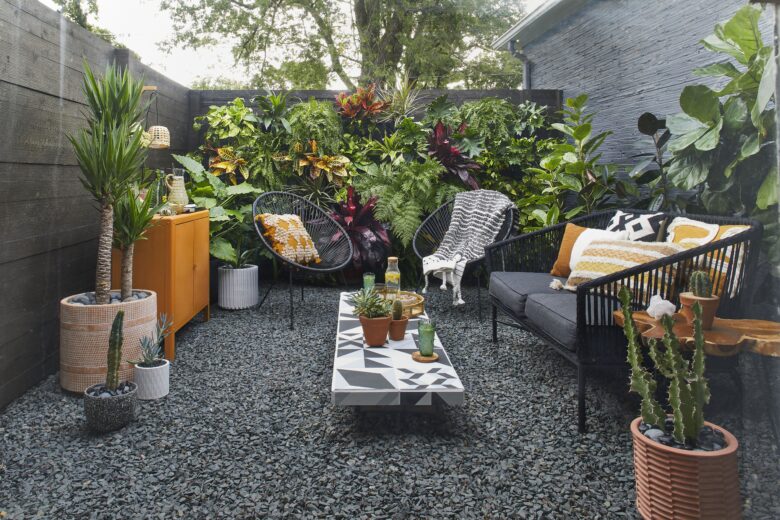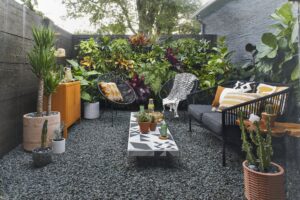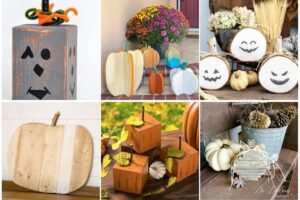Recycle glass jars into a variety of practical and decorative items, making them one of the most versatile household items. Whether they’re used to store jam, pasta sauce, or pickles, these jars can be given a new lease on life as storage containers. With a little cleaning and imagination, you can transform them into spice boxes, bathroom organizers, or even desk decorations for pens and paperclips. Whether you label them, paint the lids, or wrap them with string or fabric, glass jars make a beautiful and practical addition to any room. Crafters can also use them to store beads, buttons, or screws. An inexpensive and eco-friendly way to reduce waste and organize your home is to repurpose glass jars.
Make Handy Bags and Doilies from Old T-shirts
Old T-shirts often end up in the cupboard; they’re too valuable to throw away and too tough to wear. Upcycling these soft, flexible materials into items like woven doilies or bags is ideal. Making a T-shirt bag requires only cutting and tying; no sewing skills are required. The finished product is lightweight and easy to wash, making it perfect for carrying or shopping. You can weave or sew strips of fabric together to create a woven rug for a colorful and cozy floor mat. This project not only adds a unique handmade texture to your living space, but it also gives your belongings a new look. Plus, it keeps fabric waste out of landfills and makes it easy to create something practical.
Make Shelves and Furniture from Wooden Crates
Repurpose wooden crates from the produce market or wine shipments to create side tables, rustic shelves, or storage containers. With a little sanding, painting, or staining, they’ll fit right into any interior style. Stacked wooden crates make excellent bookcases, shoe racks, or nightstands. Hang them on the wall, and you can create unique shelves for cooking utensils, decorative items, plants, and tools. They add a vintage or rustic feel to any space, are sustainable, and upcycling wooden crates saves money and adds a natural, organic charm to your space. Whether you’re a beginner or a seasoned DIYer, you’ll love this project.
Make Crafts and Home Accessories from Wine Corks
Wine corks may be small, but you can collect them and use them to make creative home accessories. With a hot glue gun and a little patience, you can make coasters, pin boards, and even framed wall art. Cutting corks into different patterns gives them an artistic appeal. These projects not only show off your creativity but can also spark conversation as visitors see original creations made from materials that would normally be thrown away. Wine corks are fun to make and perfect for personalizing with paint or decorations. Creating beautiful home accessories from normally discarded materials is a great way to combine sustainability and design.
Turn Old Drawers into Stylish Planters or Wall Shelves
Even if furniture is old or damaged, you can still be creative with it since drawers are often fine. Hang old drawers on the wall to create shadow box shelves to display books, photos, or small items. Drill drainage holes and add a waterproof liner to create planters for indoor or outdoor plants. Drawers become eye-catching accents when painted or wallpapered on the inside. This makeover extends the life of old furniture and makes an unused wall or patio more attractive and usable. It’s a creative way to combine modern home accessories with eco-friendly ideas.
Turn an Old Ladder into a Decorative and Practical Shelf
You can now transform an old ladder, which you might have otherwise thrown in the trash, into a practical and beautiful home accessory. Placed against a wall, a ladder can become a blanket rack in the living room or a towel rack in the bathroom. Hanging horizontally, it can become a clothes-drying rack in the laundry room or a pot rack in the kitchen. Painting or waxing ladders can transform them from rustic to modern country, integrating them into various design concepts. This upcycling project is particularly satisfying because it uses such a basic element in a completely different way. The ladder’s vertical storage function saves space and adds a unique architectural element to your home.
Reimagining Picture Frames for Organizers and Displays
You can use both new and old picture frames for purposes beyond simply hanging pictures. With a little makeover, they can become practical and aesthetically pleasing storage containers. Use wire, mesh, corkboard, or string on the back of the frame to hang jewelry, keys, or small tools. Use chalkboard paint or a whiteboard to transform larger frames into a command center for notes and reminders. These little tricks can help personalize a space and clear away clutter, whether it’s a hallway, bedroom, or home office. Upcycling picture frames is a wonderful way to make the most of what you already have and add an artistic touch to an otherwise bare wall.
Tin Cans to Lanterns and Lanterns
Tin cans are another popular item that can be transformed into a fun and practical decoration. After removing the label and cleaning it, you can paint the can with paint or fabric to create a decoration that suits your style. For example, punch holes in the side and insert candles or LED lights to create a beautiful lantern with a beautiful pattern. They can also be ideal for displaying on a windowsill or balcony as a small pot for herbs or succulents. Upcycling tin cans is a fantastic way to create creative and inexpensive crafts for kids. These simple changes can add sparkle, life, and color to your home or garden while reducing waste.
Conclusion
Upcycling is more than just a trend; it’s an important and artistic way to reduce waste, save money, and improve the usability and beauty of your home. The best DIY upcycling projects require little more than vision and a keen sense of the potential of everyday objects, not expensive tools or complex knowledge. There’s something in every home that can be transformed into a new treasure, from tin cans and T-shirts to containers and broken kitchen utensils. These projects allow you to personalize your home, be thoughtfully creative, and support sustainable development. Upcycling in your daily life produces beautiful and useful items and contributes to a more environmentally friendly society.
FAQs
1. What is upcycling? How is it different from recycling?
Upcycling is the process of reusing old or discarded items to produce products of higher value or quality. Unlike recycling, which sometimes requires breaking down materials, upcycling preserves the original appearance of items and gives them a new purpose or look.
2. Do I need special tools for my upcycling project?
Most upcycling projects only require basic tools, such as glue, scissors, paint, or a drill. You can do many upcycling projects with items you already have, which is very convenient.
3. Is the reconditioned item durable and usable?
Upcycled items are not only beautiful but also very useful. They are usually durable and usable in the home, and they are well made and maintained.
4. What items can I upcycle?
Look for safe items, easy to clean, and durable. Think about their shape and possible uses. If an item inspires your creativity, it’s probably a suitable candidate for upcycling.
5. Is upcycling okay for young children?
Children will find many upcycling crafts appealing, especially those that require fabric, paper, or simple containers. While tools and supervision are essential, upcycling can still be a fun and rewarding hobby for everyone.




